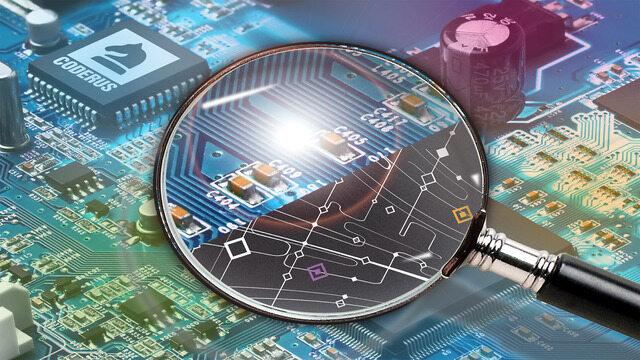Digital signal processing (DSP) plays a vital role in the world of embedded systems, providing the technology needed to manipulate digital signals to enhance their performance and functionality. This article explores the concept of DSP within embedded systems, detailing its applications, advantages, and the different types of digital signal processors available.
What is Digital Signal Processing?
Digital signal processing involves the mathematical manipulation of real-world signals, such as voice, audio, temperature, or light, by converting them into digital form to perform functions that amplify or transform these signals. DSP is used extensively in technology ranging from mobile phones to advanced radar systems. This makes processes like noise reduction, error correction, and signal enhancement possible in real time.
DSP in Embedded Systems
In embedded systems, DSPs are specialized microprocessors designed with optimized architectures for the high-speed numerical processing required in real-time digital signal manipulation. Embedded DSPs handle specific tasks such as audio and speech signal processing, image and video processing, and telecommunication system processing efficiently and effectively. The integration of DSPs into embedded systems allows sophisticated signal processing in applications that require high performance with low power consumption.
Main Features of Digital Signal Processors in Embedded Systems
Digital signal processors (DSPs) in embedded systems are designed to efficiently handle high-speed numerical calculations, making them ideal for real-time signal processing. Key features include specialized instruction sets designed for complex mathematical operations, multiple arithmetic units that execute tasks simultaneously, and direct memory access (DMA) channels, which allow fast data transfer without burdening the CPU. Let’s give. let’s give. This architecture enables the DSP to perform tasks such as audio processing, video encoding, and telecommunications management with extraordinary speed and accuracy, significantly increasing the performance and functionality of embedded systems. These features collectively make DSP invaluable in a variety of high-demand applications across many industries.
Types of Digital Signal Processors
Digital signal processors (DSPs) are specialized microprocessors designed for high-speed numerical operations, which are required in various signal-processing applications. There are several types of DSP, each suitable for specific needs:
1. General Purpose DSP: Versatile and equipped with an extensive instruction set, they handle a wide range of signal processing tasks in many applications.
2. Application-Specific DSP: These are optimized for particular tasks, such as audio or video processing, providing more efficient performance in targeted applications.
3. Multicore DSP: Featuring multiple processing cores, these DSPs handle more complex tasks and larger data sets, increasing processing speed and efficiency.
Each type offers unique benefits to suit the demands of different embedded system applications.
Important Characteristics Of Digital Signal Processors
Digital signal processors (DSPs) are designed with an architecture that is best suited for specific applications. Here are some important features of digital signal processors:
1. DSP has a high capacity to transfer large amounts of data rapidly from memory.
2. They provide specialized instruction sets designed for efficient embedded system development.
3. DSPs are ideal for handling repetitive and computationally intensive tasks.
4. They allocate separate memory for data and program instructions.
5. A distinctive feature of DSPs is their multi-access memory architecture in the data path.
6. They use pipelining techniques to boost performance.
7. In the field of audio signal processing, DSPs help perform noise reduction, compression, and equalization in devices such as smartphones and premium audio systems.
Embedded Signal Processing Applications
Embedded signal processing is integral to many modern applications, making devices smarter and more efficient. In telecommunications, DSPs handle tasks such as signal modulation and data compression, which are critical for clear and fast communications. Audio and video processing also rely heavily on DSP for tasks such as noise reduction and media file compression, increasing both the quality and efficiency of a multimedia system.
In the medical field, DSPs play an important role in imaging technologies. They process complex data from MRI and ultrasound machines, improving image clarity and aiding faster, more accurate diagnosis. Additionally, in automotive technology, DSPs contribute to systems such as radar and sonar, enabling features such as collision avoidance and improved vehicle navigation. By processing signals directly and in real-time, embedded DSPs support these applications, ensuring that they operate effectively within power, size, and speed constraints.
Block Diagram of Digital Signal Processor
The block diagram displays the journey of sound captured by the microphone, which it converts into an electrical signal. This signal is amplified by an operational amplifier (op-amp) before reaching the analog-to-digital converter (ADC). Before this, a filter intervenes to eliminate any possible distortion.
In an ADC, electrical signals are converted to digital data, consisting of bits represented as 1s and 0s, which set the stage for digital processing. The central component here is the DSP (Digital Signal Processor), which is an efficient chip that processes data rapidly using state-of-the-art CMOS technology.
After the DSP completes its processing, the digital-to-analog converter (DAC) converts the digital data back to analog signals. A filter then refines these signals, ensuring a smooth output.
Ultimately, the speaker converts these refined electrical signals back into audible sound waves. This system can be modified based on specific requirements.
Further Reading:-
- What Is An Actuator? Various Types, Benefits, Applications
- What Is SCR In Power Electronics? Working, Applications, Construction
Benefits of using DSP in embedded systems
Digital signal processors (DSPs) in embedded systems provide significant benefits that enhance the functionality and performance of various applications. Primarily, DSPs are designed to efficiently handle high-speed numerical calculations, making them ideal for processing complex algorithms involved in signal manipulation such as audio and video enhancement. This capability ensures that embedded systems can perform real-time processing without any delay, which is important for applications such as real-time communications and multimedia systems.
Furthermore, DSPs are highly efficient in terms of power consumption, which is especially valuable in portable and battery-powered devices. They can execute multiple operations simultaneously, reducing the need for more powerful, energy-consuming processors. This efficiency also contributes to equipment compactness, as fewer components are required for processing operations.
Additionally, DSPs provide the flexibility to update firmware or software to accommodate new functionalities or improve performance, thereby extending the lifecycle of embedded systems and ensuring adaptability to future technological advancements.
Challenges and Considerations of DSP in Embedded Systems
Integrating digital signal processors (DSPs) into embedded systems presents many challenges that developers must deal with. One of the primary considerations is the complexity of DSP programming. Engineers need a solid understanding of both hardware and software to effectively optimize DSP functions. Managing power consumption is also important, as DSP operations can be energy-intensive, and embedded systems often operate under strict power constraints. This requires careful design to balance performance and power efficiency.
Additionally, thermal management becomes a major issue, especially in compact devices where excessive heat can degrade system reliability and lifetime. Developers must design systems that maintain performance without exceeding thermal limits. Finally, the rapid evolution of technology means that DSP solutions must be scalable and adaptable to future advancements, requiring constant updates and compatibility considerations to ensure long-term functionality and relevance in the market.
Conclusion
Digital signal processing is a dynamic field that significantly expands the capabilities of embedded systems. As technology evolves, the role of DSPs in these systems is becoming increasingly important, leading to advances in a variety of sectors including telecommunications, healthcare, and consumer electronics. By leveraging the power of DSP, developers can create more efficient, reliable, and feature-rich embedded systems that meet the growing demands of modern technology.






